6 of the Most Infamous Murder Houses in American History

Photo: Mitch Turner/Newsday RM via Getty Images
Audiences have long been spellbound by murder houses, as evidenced by the number of cult favorite TV shows and box office hits centered around places where the unthinkable happened. From the true crime story turned 1979 classic The Amityville Horror to the 2011 debut that ignited the American Horror Story anthology franchise (subtitled simply: Murder House), the intrigue in abodes with dark backstories has been enough to attract viewers for decades.
In real life, dwellings that were once crime scenes sometimes struggle to sell due to their stigmatized pasts. The Tudor-style manor at the center of the JonBenet Ramsey murder in Boulder, Colorado, was removed from the market this spring after multiple price cuts yielded no buyers. A massive devaluation isn’t always in order, though; about 20 miles away, the Watts home in Frederick, Colorado—where Chris Watts killed his pregnant wife, Shannan, in a case that sparked public outcry and a slew of documentary adaptations—saw a 29% price increase from its 2022 sale to its listing earlier this year, according to Realtor.com.
Dr. Randall Bell has dealt with his fair share of properties forever stained by their heartbreaking, high-profile lore. As the CEO of Landmark Research, a firm specializing in real estate damage economics, Bell has been retained on cases including the Ramsey house, Nicole Brown Simpson’s Brentwood home, and the Santa Fe, California, manse that was the site of the Heaven’s Gate cult mass suicide. In Bell’s experience, such infamous properties will typically see a 15% to 25% decline in value. While the events that unfolded in these homes may draw in passersby, Bell says it’s unlikely that the true crime boom has ever made for an increased valuation in such circumstances.
“There’s a lot of people who have a macabre interest [in murder houses], but I don’t really see people particularly buying these homes because of their fascination with crime; it’s more that they’re getting a discount.” As with the properties destroyed in Hurricane Katrina (which Bell also worked on), buyers tend to “swoop in” for better rates than they’d typically get in the area: “It’s the same concept as a bankruptcy,” Bell explains. “People buy distressed properties, and [murder sites] are distressed properties.”
Razing the residence completely is apparently a common consideration for those trying to offload a murder house, per Bell. When it falls under their ownership, the municipality on which a stigmatized property is located sometimes sees fit to order an edifice knocked down to offer some semblance of closure. In 2011, the home where “Cleveland Strangler” Anthony Sowell stored the bodies of his victims was demolished before a group of satisfied onlookers. Family members of the those killed by Sowell reportedly received a letter from the city assuring them that the destruction of the home would be “performed in such a way that no piece of the property will remain,” an action the note says was taken “in order to prevent actions that would be disrespectful to the memory of your loved one, your family and our community.”
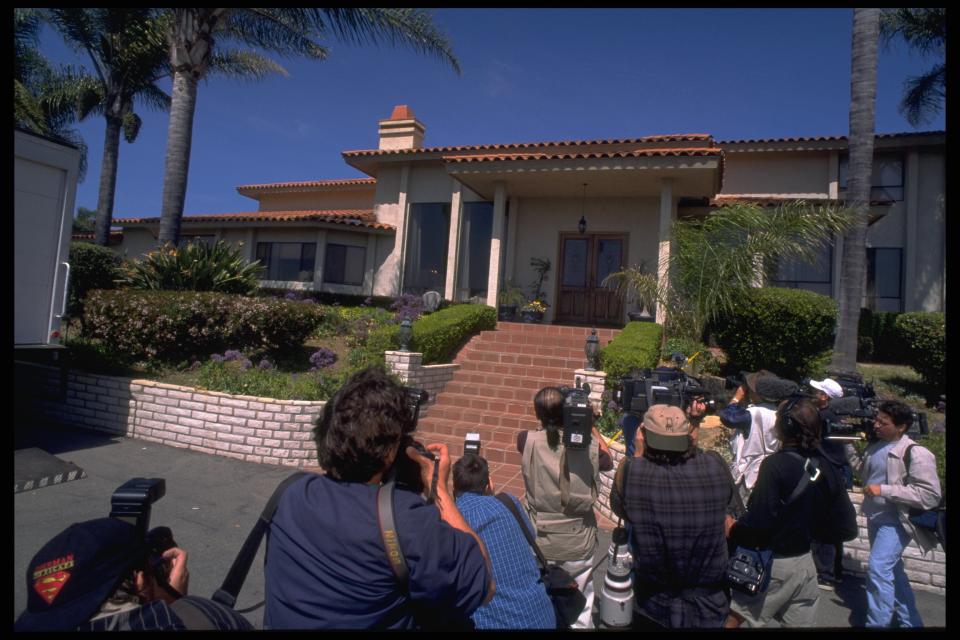
Heaven's Gate mass suicide
Though total demolition may seem like the best way to exorcize a property of its harrowing past, Bell cautions sellers against taking that approach in every case. “It comes up all the time, and my answer is: You’re not helping anything,” he says. “Bulldozing and rebuilding is very expensive, and the stigma, or the risk—which is the technical term—attaches to the land. The fact that this is the site is what counts and you can’t erase that. Think of a Revolutionary War battlefield: there’s nothing there, no bodies, no swords, no cannons. It’s just a field, and yet what occurred on that site is at the forefront of thought. It’s the same thing with these crime scenes. Heaven’s Gate was an old, outdated property which had some design problems, but the improvements were still ok. They bulldozed every blade of grass on that property. Still, people go by and look at it like it‘s the Heaven’s Gate house. And it’s an entirely new house.”
On the other hand, Bell explains that giving an estate a facelift might help dissipate the attention of voyeurs who flock to the grounds. Rather than tearing down the Brown Simpson house entirely, the family overhauled its exterior. “[Nicole’s father] Lou [Brown and I] were talking about how to mitigate and manage the issues, and he changed the façade of the house, [which] in my opinion was a good thing to do and he did a really good job at it,” he says. “I went by to see what he had eventually done and I couldn’t even recognize it. Architecturally, it had been dramatically altered to the point that—I can’t make this stuff up—a station wagon of tourists with Florida license plates pulled up and took pictures of the entirely wrong property.”
While they might appear as inconspicuous as any other residence from the curb, the following homes are some of the most notorious murder sites in American history.
The Lizzie Borden house
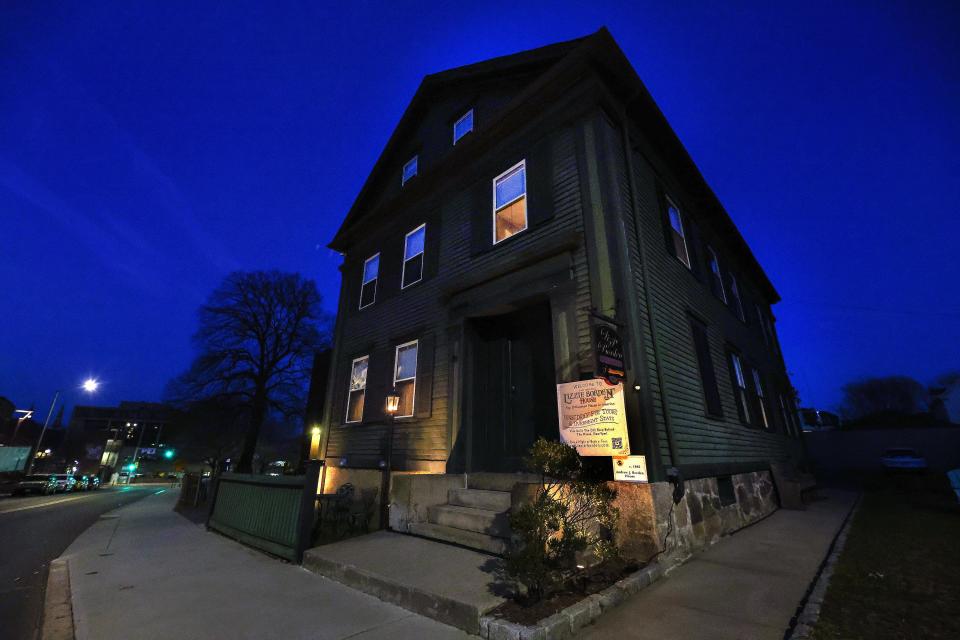
Lizzie Borden House
In 1892, Andrew Borden and his wife, Abby Borden, were slain in broad daylight inside their home on Second Street in Fall River, Massachusetts. Andrew’s daughter Lizzie Borden and the family’s maid were the only other people home at the time. Lizzie stood accused of killing her father and stepmother with a hatchet in a crime so publicized it spawned an enduring nursery rhyme. Lizzie, then 32 years old, was acquitted of both killings at trial and briefly returned to the house before purchasing a 14-room Queen Anne–style home in Fall River with her sister. Today, the murder site is a bed and breakfast. Per the Historic Lizzie Borden House’s website, the abode’s decor has been “painstakingly duplicated, and the original hardware and doors are still intact. Artifacts from the murder case are displayed while memorabilia from the era line shelves and mantel tops.” The double murder remains unsolved.
10050 Cielo Drive
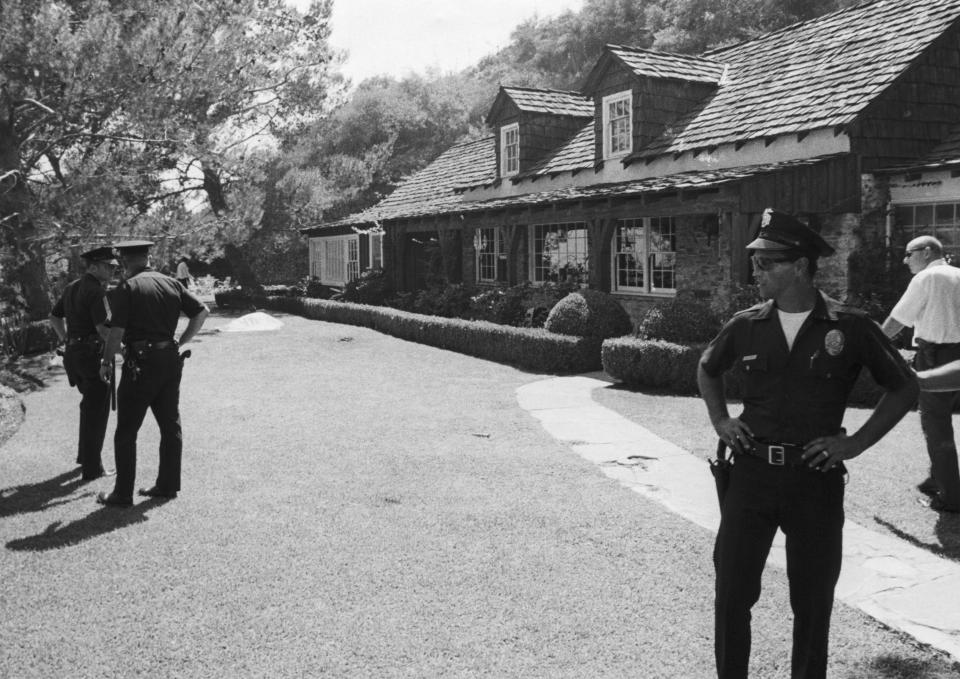
Officers Guarding a House
A cult of youths led by aspiring musician Charles Manson, known as the Manson family, struck fear into the hearts of Los Angeles residents after two bloody home invasions across two days in August 1969 claimed the lives of seven victims in total. The murders carried out by Manson and his followers would become fodder for true crime documentaries, TV show narratives, and big-budget blockbusters alike, though the final resident of the original LA home where 26-year-old actor Sharon Tate and four more were killed eventually saw the folly in sensationalizing the abode. Trent Reznor of Nine Inch Nails, who rented the house in 1992 and recorded the majority of The Downward Spiral there, moved out the next year following a chance encounter with Tate’s sister.

Sharon Tate
“She said: ‘Are you exploiting my sister’s death by living in her house?’” Renzor recalled in a Rolling Stone interview. For the first time the whole thing kind of slapped me in the face. I said, ‘No, it’s just sort of my own interest in American folklore. I’m in this place where a weird part of history occurred.’ I guess it never really struck me before, but it did then. She lost her sister from a senseless, ignorant situation that I don’t want to support. When she was talking to me, I realized for the first time, What if it was my sister? I thought, Fuck Charlie Manson; I don’t want to be looked at as a guy who supports serial-killer bullshit. I went home and cried that night.”
Reznor took the front door with him upon his departure. The dwelling was torn down in 1994 and replaced by an 18,000-square-foot, nine-bedroom Mediterranean-style home. In an effort to remove all traces of stigma, the address was also changed to 10066 Cielo Drive.
The Amityville Horror house
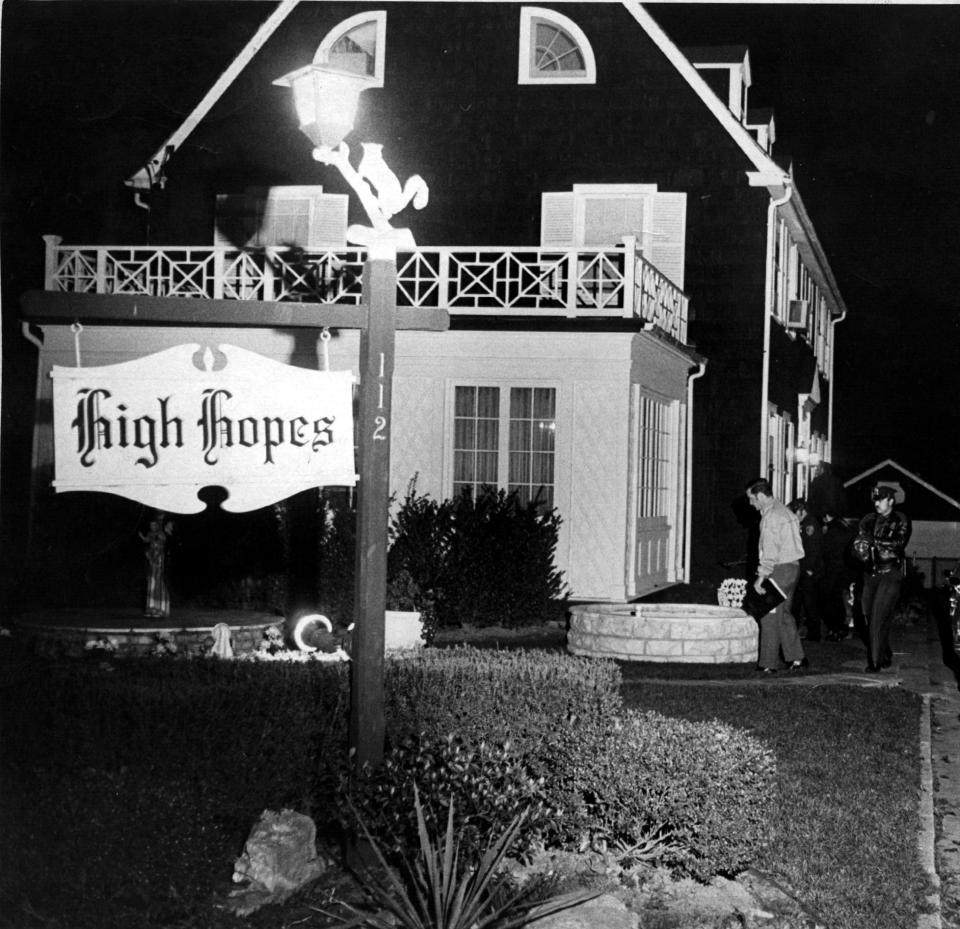
DeFeo family home in Amityville, New York in 1974
Situated on Long Island’s south shore is a home that would put its quaint village setting on the map for the grisliest of reasons. The Dutch Colonial Revival–style home was the site of six murders; Ronald DeFeo Sr., Louise DeFeo, and four of their five children, Dawn, Allison, Marc, and John, were fatally shot by their eldest, Ronald DeFeo Jr., on the evening of November 13, 1974. The home’s haunting saga continued with George and Kathy Lutz, who subsequently moved in and claimed they were terrorized by paranomal happenings inside the home, among them oozing walls and appearances of demonic figures. Their plight inspired the plot to Jay Anson’s 1977 book, The Amityville Horror. The story was later adapted into the 1979 film of the same name starring James Brolin and Margot Kidder.
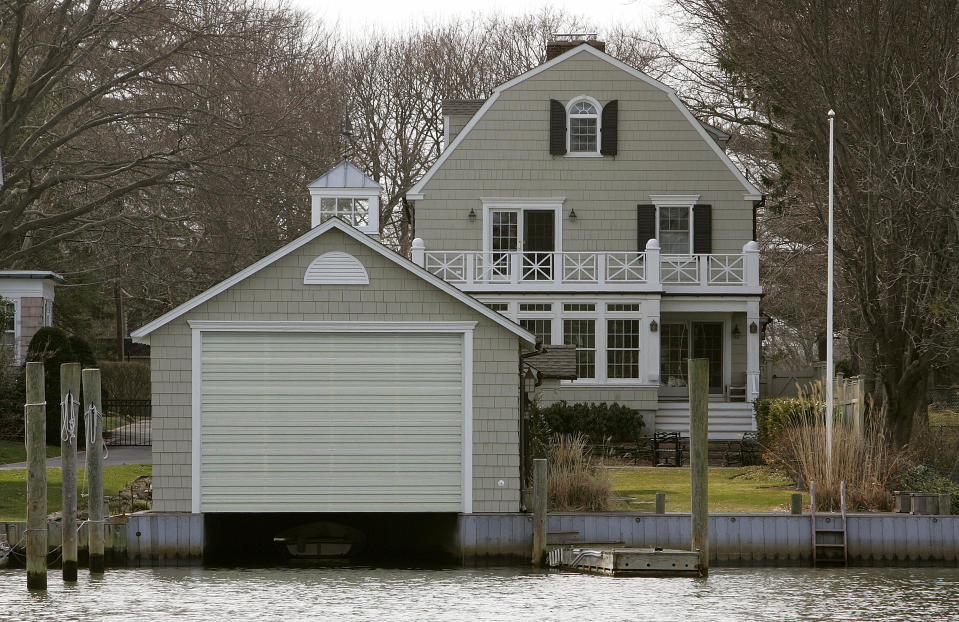
Amityville Horror House
The DeFeos purchased the stately three-story home in 1965. A sign outside the home bore the words “High Hopes,” a name which DeFeo Sr. reportedly bestowed upon the house in reference to the family moving up in the world from their more modest quarters in Brooklyn to the spacious abode at 112 Ocean Avenue. Its address has since been changed to 108 Ocean Avenue.
The Clutter family farmhouse

Clutter Farmhouse
The Clutter family, largely beloved and respected by their community, met their ends on a fateful night in November 1959 that sent shockwaves through their small heartland town. Media descended upon Holcomb, Kansas, in the wake of the fatal shootings of Herb, Bonnie, Nancy, and Kenyon Clutter—among them, Truman Capote, who would write an account of the murders that delivered him to literary superstardom. The In Cold Blood author described the rural town as “flat, and the views are awesomely extensive; horses, herds of cattle, a white cluster of grain elevators rising as gracefully as Greek temples are visible long before a traveler reaches them.” According to Realtor.com, the two-story dwelling was completed in 1948 at a cost of $40,000.
Holcomb locals Leonard and Donna Mader, who bought the home in 1990, recalled the chilling feeling of life in the town when the killers’ identities were still unknown. “I didn’t sleep for nights and nights and nights. We nailed all our windows shut,” Donna told The Oklahoman. Upon moving into the former Clutter home years later, “We had a lot of, you know, weird feelings,” she said. “But after several years, you realize the house didn’t do anything.” At one point, the Maders opened the home for tours at $5 a pop, but that endeavor was eventually sidelined by zoning restrictions as well as disapproval from folks in the Holcomb community. “It was upsetting for some people who had ties to the house,” the Maders’ daughter Sue Wieland said.
Jeffrey Dahmer’s Milwaukee apartment
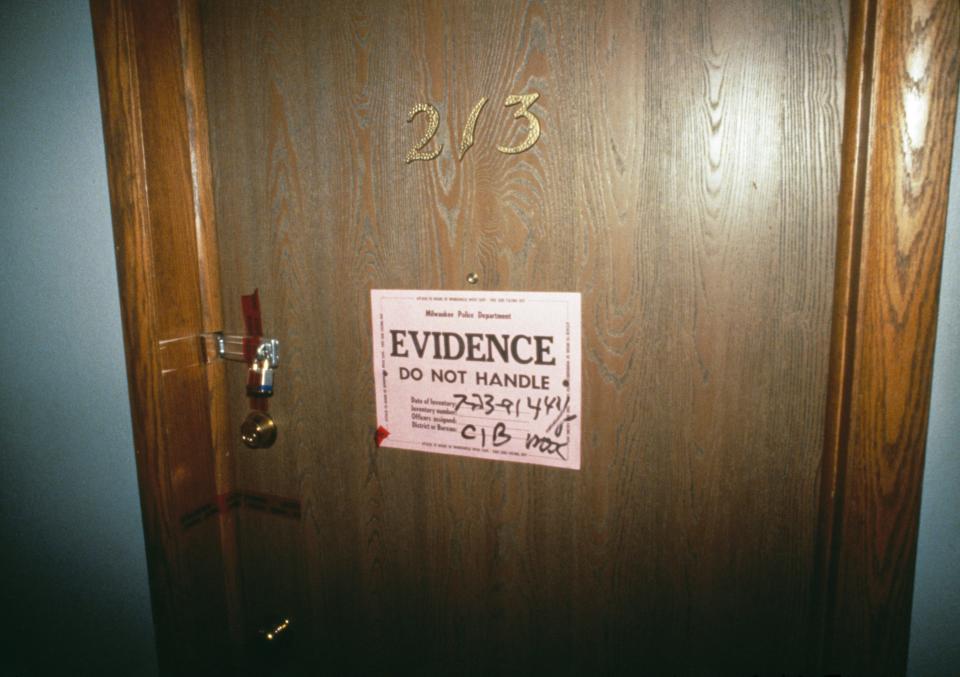
American Serial Killer Jeffrey Dahmer
Serial killer Jeffrey Dahmer was convicted of 15 homicides, many of which took place behind the door of his Milwaukee apartment. In addition to his strange behavior, neighbors complained about the rancid odor emanating from Dahmer’s unit. Bell did not directly work with the buyers of the complex, but he met with the owners as part of a study of the case. “I was surprised [the building] sold at a premium, I tracked down the buyers and asked them why and the reason why is that they were a redevelopment entity associated with Marquette University,” he says. “They were redeveloping the neighborhood and wanted to buy the property and demo it so it didn’t throw a wrench in their overall project.”
H.H. Holmes’s “Murder Castle”
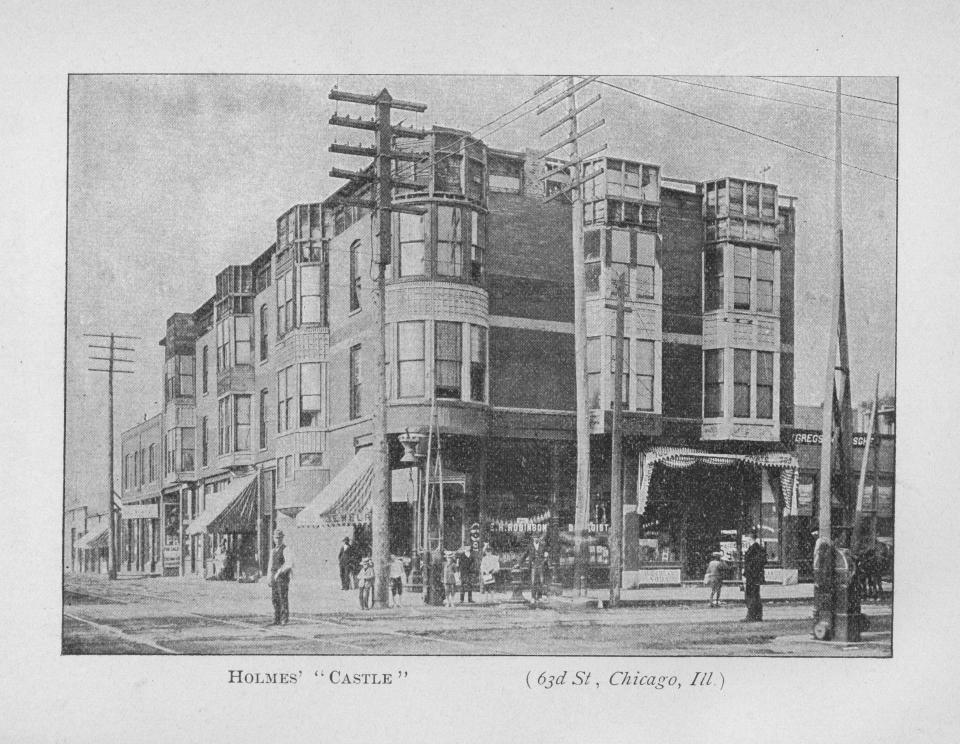
'Holmes' Castle'
H.H. Holmes left his wife and child behind in New Hampshire when he set his sights on Chicago in 1885. Born Herman Webster Mudgett, he rebranded upon arrival to usher in his new life, reportedly adopting the surname Holmes as an homage to Sherlock Holmes. He would become a character in a number of mysteries, but unlike the Sir Arthur Conan Doyle sleuth, he cast himself as the villain. Holmes confessed to 27 murders but was convicted of only one: that of Benjamin Pitezel, for which he was executed in 1896 at the age of 34.
Much of the intrigue with Holmes, whose life inspired the 2003 historical nonfiction book The Devil in the White City (as well as an ill-fated Scorsese adaptation, once slated to star Leonardo DiCaprio but since caught in “development hell”) concerns his “Murder Castle,” the massive three-story manse he had built on Chicago’s West 63rd Street. Holmes crafted the dwelling to employ a labyrinthine design, allegedly complete with rooms for torturing victims and spaces such as a quicklime pit and furnaces for the disposal of remains. Sensationalistic journalism at the turn of the 20th century, rumors coursing through the city, and some fabrications by Holmes himself made for an inflated murder count and a number of false narratives around the killer and his abode. According to History.com, the house burnt down in 1895 after witnesses saw two men entering the building late one night.
Originally Appeared on Architectural Digest


